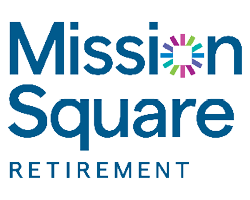By Lee Rasch
Most people are not familiar with fusion voting, even though it has an active political history in the United States. Fusion voting enables a third-party organization to nominate a candidate who is also a candidate of one of the two major political parties. The fusion voting process encourages the political parties to work together on major policy issues.
How does fusion voting work? Fusion voting allows the same candidate to be nominated by more than one political party. Voters still vote only once in each election, but they can choose their preferred candidate without supporting a party they may disagree with. Essentially, some candidates would appear more than once on a ballot. All votes cast for an individual candidate — whether nominated by a major political party or a third party — would then “fuse” together to create a final vote tally.
Fusion voting played a major role in national politics before and after the Civil War. It was used extensively on ballots up to the turn of the 20th century. And then the two major political parties took legislative steps to discontinue the practice. With a few exceptions nationally, fusion voting has become dormant…until now.
Unless you’ve been living in a cave for the past several years, you’re keenly aware of the rancor, hostility, and growing polarization dominating political discourse. These conditions break down trust. In this polarized environment, it’s not unusual for Americans to consume completely separate media sources giving vastly different “news” about the same people, places, and events. A recent study by the Pew Research Center reports that, “Americans’ views of politics and elected officials are unrelentingly negative, with little hope for improvement on the horizon.” The voices of independent third-party candidates are lost in the shuffle.
It’s time to look more closely at how our own election system allows and encourages the more extreme partisan candidates to win elections, while ignoring the voice of the majority of Americans. There are other ways to elect leaders who represent their constituents in our own nation’s history. Fusion voting might be one way of countering the rise of extremists to top slots on the ballot.
Fusion voting has a rich tradition in the United States. It was in common use during our nation’s first century. For example, in 1854, Free Soilers, anti-slavery groups, and other fringe parties fused their efforts in Ripon, Wisconsin, to create the national Republican Party. Fusion voting was also credited with enabling poor farmers and blacks in post-Civil War North Carolina to work together politically. As a result, John Adams Hyman, enslaved until 1865, was the first Black American to represent North Carolina in the U.S. House of Representatives. There are numerous examples in U.S. history where fusion voting was used to promote third-party policy initiatives and keep the major political parties in check.
Not surprisingly, Democratic and Republican Party leaders viewed fusion voting as a threat. By the turn of the 20th century, both the Democratic and Republican parties sought to limit the influence of third parties through legislation. State by state, they passed legislation prohibiting fusion voting. In 1895, Wisconsin joined four other states to pass legislation barring candidates from being listed more than once on the ballot. Soon, most of the states passed similar laws. Although fusion voting is still allowed today in Connecticut and New York, over the years, the concept has, in large part, fallen into disuse…until recently, that is.
Within the last decade, efforts have been growing to revive fusion voting. Several states are actively promoting the concept. Proponents in the states of Kansas, New Jersey, and Wisconsin have introduced litigation, seeking to allow fusion voting to be restored to practice.
Let’s look at a hypothetical example of how fusion voting might work today. According to the Pew Research Center, campaign finance reform is rated as a top three bipartisan concern for Americans. If a third party adopts campaign finance reform in its platform, it also could reach out to endorse candidates from the Democratic and Republican parties who have a strong position in support of campaign finance reform. Under the fusion voting model, voters are given the option of supporting a key policy measure, without declaring support for the entire platform of the major parties. Meanwhile, candidates under the two major parties have the freedom to declare support for policy issues like campaign finance reform. In this case, the third-party votes are desirable, not spoiler votes.
In April 2025, a new cross-partisan organization, United Wisconsin, announced its plans, through litigation, to reestablish fusion voting in Wisconsin. David Mahoney, a former Democratic Dane County Sheriff, and Dale Schultz, former Republican State Senator, are co-chairing the efforts. United Wisconsin executive director Kristine Andrews said the organization believes fusion voting should be permissible in Wisconsin because voters have a constitutional right to nominate any candidate they want. Though they recognize the challenges faced, United Wisconsin leaders are determined to advance their effort.
[Insert photo: Rasch] I am a plaintiff in the Wisconsin lawsuit. When asked why I am taking a position in support of fusion voting, the answer is pretty clear…the domination by the two political parties is not working. And the third-party voice is being taken out of the equation. The two major parties will continue to resist change unless the public speaks out.
That being said, can public pressure and third-party options really have an impact on the two major parties? Let’s take a look at the One Big Beautiful Bill recently approved by the House of Representatives. While the 1,037-page legislation has many policy layers, a major theme involves deficit reduction by targeting waste, fraud, and abuse from the federal budget. Though both parties may talk about the importance of deficit reduction, they typically put the blame on the policies and practices of the other party. A balanced budget can only occur if both major parties find ways to work together and address the full spectrum of possible actions, including increasing revenue (taxes) and reducing spending. These conditions are clearly not present in 2025. Not surprisingly, as reported by Fox Business, the Congressional Budget Office projects the House version of the legislation will cause the deficit to increase.
When the federal government last maintained a balanced budget in the 1990s and early 2000s, a strong third party candidacy by Ross Perot stoked popular awareness of the issues surrounding federal deficit spending. Thanks to Perot’s persistent third-party message and his demonstrative charts showing the scale and scope of America’s fiscal problems, candidates Bill Clinton and George H.W. Bush were compelled to address an issue they’d previously ignored in the 1992 presidential campaign. As a result of this public pressure, following the presidential election, the two major parties worked together, leading to balanced budgets in 1998, 1999, 2000 and 2001.
The work of United Wisconsin deserves our close attention. With most Americans deeply frustrated by toxic partisanship and legislative paralysis, fusion voting offers a practical, time-tested path forward. It empowers voters without forcing them into the rigid boxes of the two-party system. If this approach gains traction in a politically divided state like Wisconsin, it could become a national model for reform—one that reintroduces competition, cooperation, and accountability into our elections.
Let’s be honest: the current system isn’t working. The dominance of two entrenched parties has silenced the independent and third-party voices that once brought bold ideas and real solutions to the table. Fusion voting isn’t a magic fix—but it’s a smart, constitutional step toward making our democracy more responsive to the people it serves. If we want our leaders to work together, we need to change the rules that reward extremism and division. Fusion voting just might be the spark that reignites collaboration—and gives voters a reason to believe again.
Lee Rasch is Executive Director of LeaderEthics, a nonpartisan/nonprofit organization committed to promoting ethical leadership among elected officials.



